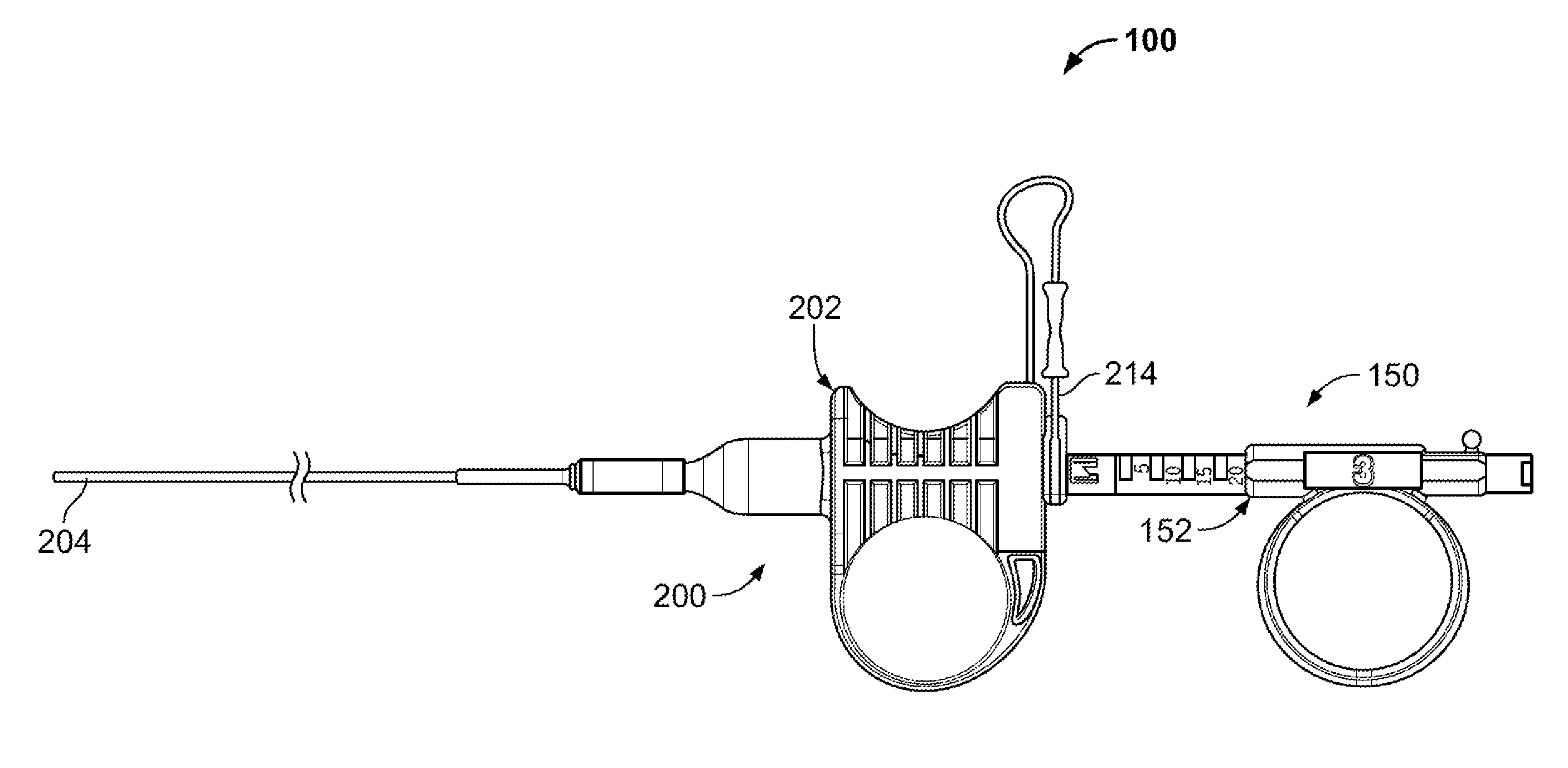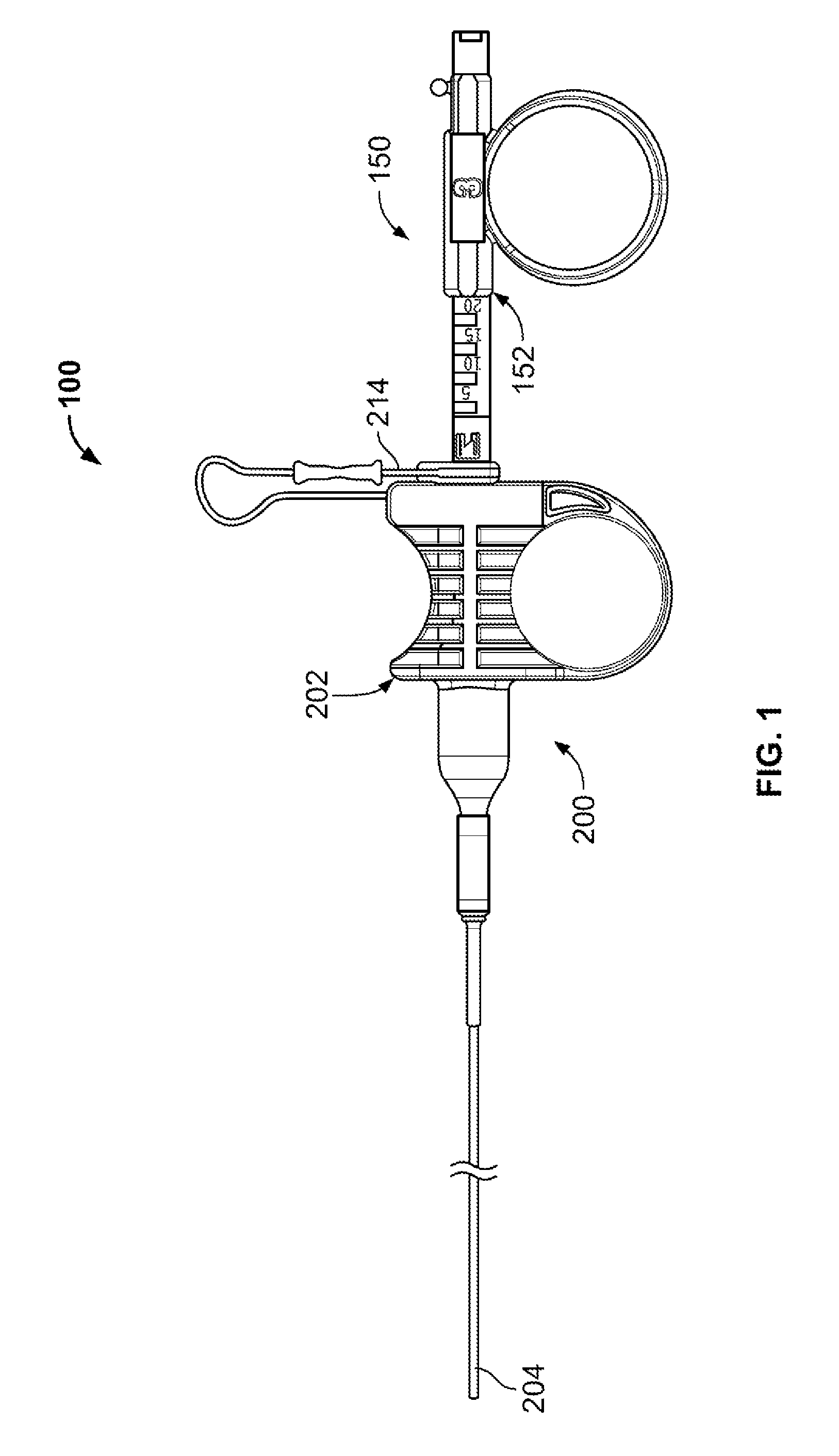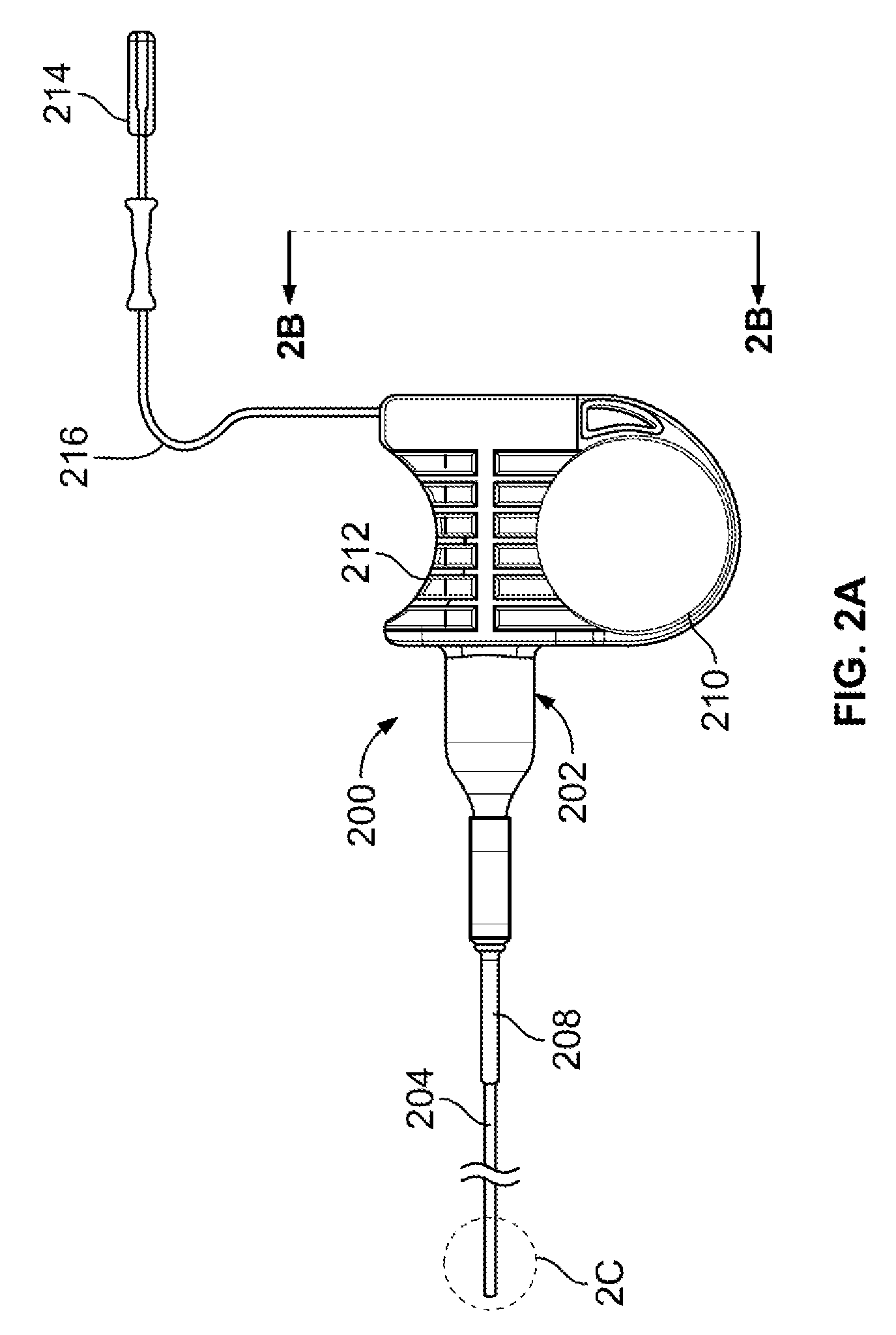Tissue sampling devices, systems and methods
a tissue sampling and tissue technology, applied in the field of tissue sampling devices and methods, can solve the problems of increasing the need of a physician, increasing the risk of infection, and incurring additional side effects, so as to reduce the risk of infection
- Summary
- Abstract
- Description
- Claims
- Application Information
AI Technical Summary
Benefits of technology
Problems solved by technology
Method used
Image
Examples
Embodiment Construction
[0043]FIG. 1 illustrates an example of a tissue sampling device 100 having a coring device 150 slidably coupled through a sheath device 200. The coring device 150 includes a coring handle 152 (also referred to as a coring hub) affixed to a shaft (not shown in FIG. 1), where the shaft extends through the sheath device 200. The sheath device 200 includes a sheath handle 202 (also referred to as a sheath hub) affixed to the sheath 204 (typically at a proximal end). The coring handle 152 and the sheath handle 202 are slidably coupled to form a handle assembly of the tissue sampling device 100. In some variations, the coring handle 152 is keyed or otherwise configured so the coring device 150 cannot rotate relative to the sheath 200 or sheath handle 202. As is discussed below, the features of the coring handle 152 and sheath handle 202 provide an advantage when a user actuates the handle to drive the coring device 150 into tissue for capturing a sample of tissue while allowing for contro...
PUM
 Login to View More
Login to View More Abstract
Description
Claims
Application Information
 Login to View More
Login to View More - R&D
- Intellectual Property
- Life Sciences
- Materials
- Tech Scout
- Unparalleled Data Quality
- Higher Quality Content
- 60% Fewer Hallucinations
Browse by: Latest US Patents, China's latest patents, Technical Efficacy Thesaurus, Application Domain, Technology Topic, Popular Technical Reports.
© 2025 PatSnap. All rights reserved.Legal|Privacy policy|Modern Slavery Act Transparency Statement|Sitemap|About US| Contact US: help@patsnap.com



